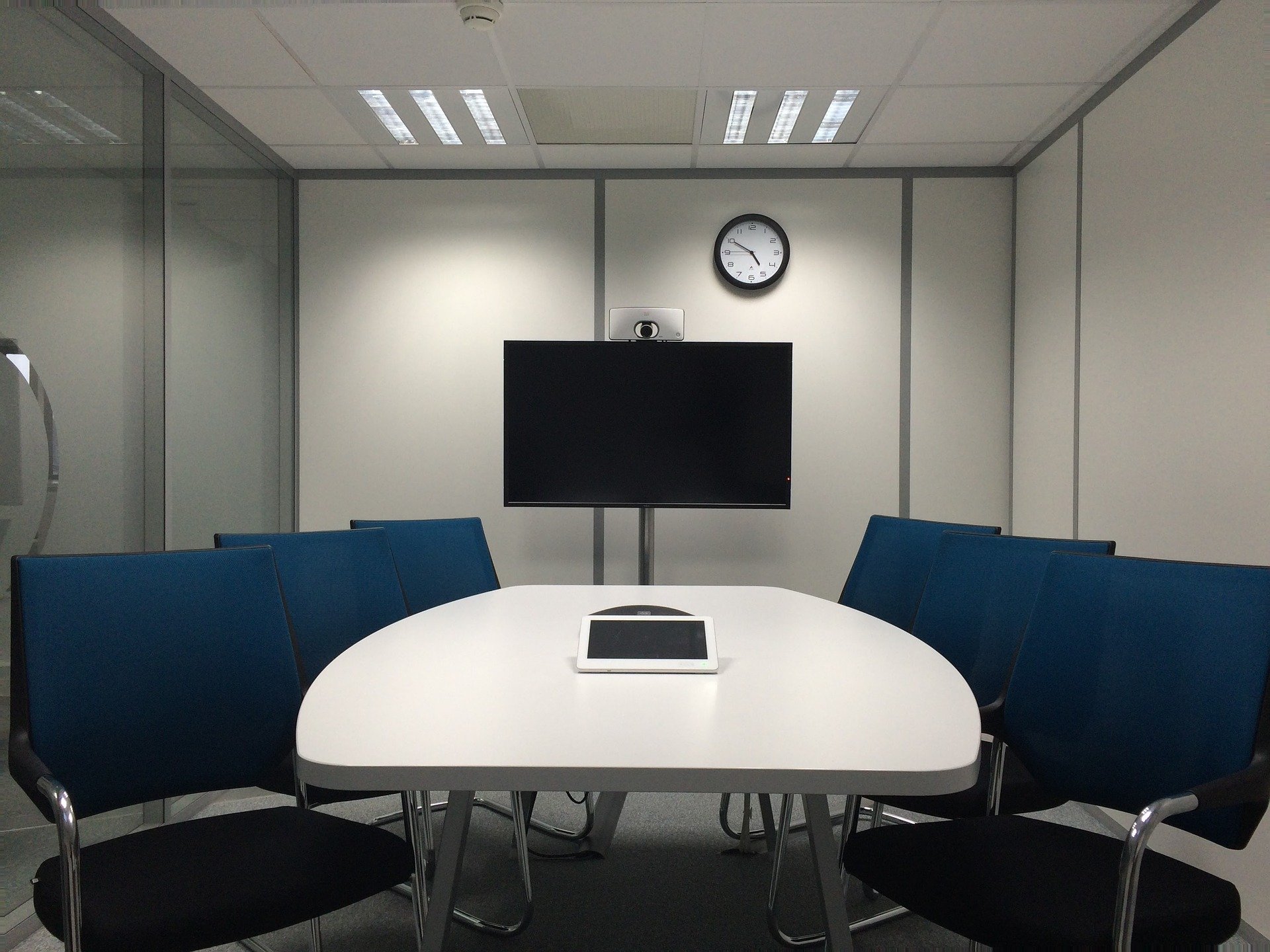Chances are, your conference rooms, huddle rooms, or meeting spaces were designed and built to be sleek, stylish, and maybe even comfortable meeting spaces featuring contemporary art, pillow-top executive-style stairs, and single-serve coffee machines.
However, beautifully designed rooms are not necessarily conducive to productivity. Sometimes managers choose meeting room technologies simply because they fall within the budget and have some “cool” features. Or they are placed in the room as an afterthought, with thought to how they look but not whether they are placed for convenient or optimal use. The result is that users struggle with basic collaboration, like being able to hear remote meeting participants, getting meetings started on time, sharing content with everyone, and more.
These types of problems keep employees from getting meaningful work done during meetings and keep the IT team from working on important initiatives because they get interrupted to save these meetings—all of which is a drain on the bottom line.

More than half of workers say "wasteful meetings" are the biggest obstacle to getting work done, but there are ways to overcome common productivity barriers. Here are 10 ways your meeting space design interferes with productivity—and how you can fix them.
Improve Technology and the collaboration environment
- User controls are too complicated. If there are too many buttons or each device requires a different means of control, find a solution that consolidates control. Get rid of the remotes on the table and install a touch panel that lets you control everything in the room, or choose solutions that allow you to use voice commands.
- It’s difficult to connect your devices. It’s easy to waste time trying to connect to the display or the presentation systems. Consider single-cable solutions that are bandwidth-efficient or wireless solutions that connect to the meeting room wifi.
- Participants can’t hear what’s being said. Aside from causing a lot of frustration, sound issues waste time. Make sure you’re using the right number and type of microphones for the room. Room size, table size, and room layout all affect whether you should install tabletop, gooseneck, boundary, or ceiling microphones. Finally, ensure the microphones are strategically placed throughout the room so everyone’s voice will be picked up.
- The camera doesn’t capture everyone in the room. Your room may be equipped with the best high-resolution cameras, but without pan/tilt/zoom or the right field of view, they may interfere with productivity by forcing participants to spend time moving around to be seen. Choose a PTZ camera with wide FOV and autofocus—and place it at eye level—to keep everyone focused on the conversation rather than who you can or can’t see.
- Participants can’t always share or access content. Nothing causes a meeting to come to a grinding halt like making attendees stare at a blank display while a presenter struggles to share crucial information—whether it be in slides, video, spreadsheets, a slide deck, or other kind of document. Everyone loses time during troubleshooting or while getting help from IT, or everyone just gives up and gets on a phone call. To avoid awkwardness and lost time, standardize conferencing and collaboration software and make sure they’re easy to use.
- Presenters interrupt the meeting to tinker with technology. Do meeting presenters pause to get up and reach the controls? Do they need to switch positions because only one seat is in reach of the cable? Do they need to get up to adjust the lighting? If so, redesign the room so all controls are within reach of users. There are many possible solutions, such as an application on the presenter’s phone or smart, automated room technologies, as well as a tabletop touch panel that allows the presenter to quickly make adjustments during their presentation.
- Bad acoustics detract from what’s being said. Echo or distracting noise in a room can annoy meeting participants and diminish the quality of communication, thereby harming productivity. Invest in drapes, acoustic panels, or other sound absorption solutions as an economical way to solve this problem.
- Meeting participants can’t see due to bad lighting. Poor lighting can mean the room is too dim, that light reflects into people’s eyes, or that lights create a glare on the display. Participants end up shuffling around, adjusting blinds, squinting, or doing a lot of things other than concentrating on work. The solution is to make sure you don’t have too many reflective surfaces in room, lighting is properly positioned, and blinds are easily controlled or even automated.
- Employees can’t concentrate because the room is too hot or too cold. More than half of employees say office temperature can be detrimental to productivity. A smart thermostat can adjust the room temperature based on predetermined settings, individual user preferences, or room occupancy.
- Outside noise is distracting. Soundproofing will not only make sure meeting participants aren’t interrupted by what’s happening outside of the conference room, but will also allow them to focus on productive work without worrying that they might also be heard by others. Acoustic foam panels and partitions are a great way to prevent outside noise from seeping into your meeting space.
Start Improving meeting space Productivity Today
Even when you know which productivity issues you need to address, the task can seem overwhelming—especially when you need to tackle them across your entire organization. If you need help getting started, we can help. Contact us for a free consultation. Contact us for a free consultation.



